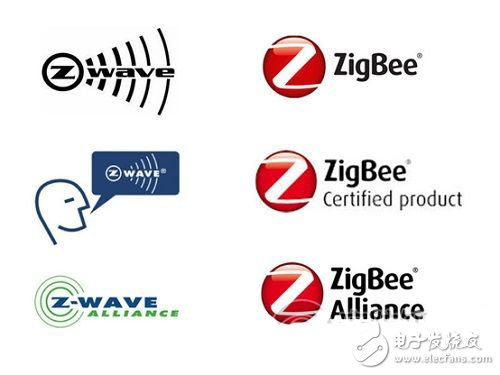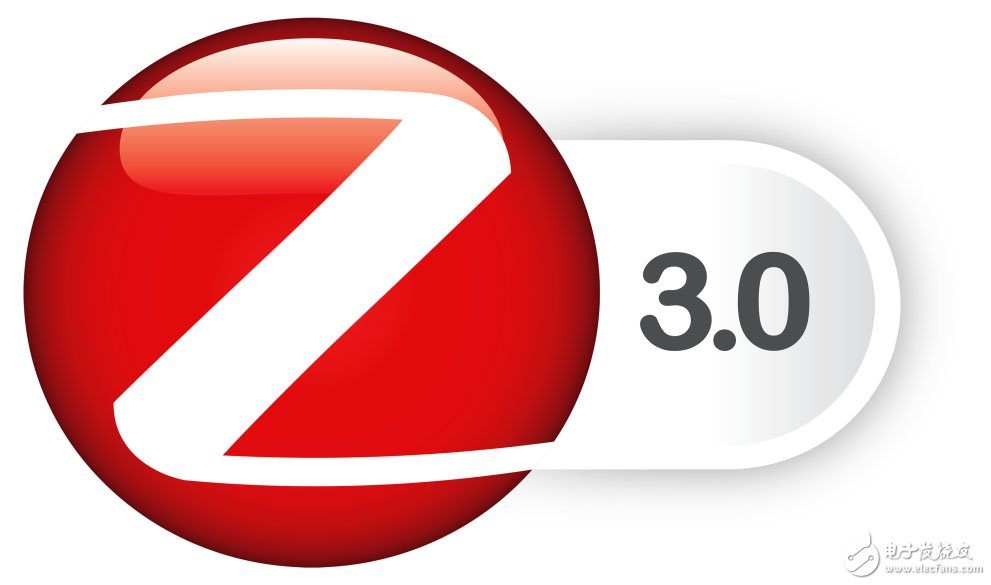So many apps in the smart home industry cause a lot of problems for users. If users need to use smart devices produced by different manufacturers, they must purchase smart home gateway devices from different vendors and use different vendors' APPs to control smart devices, which greatly reduces the enthusiasm of users to purchase and use smart home products. So what is the root cause of the inability of smart homes to achieve interoperability? That has to start from the smart home industry chain.
Smart home industry chain
The smart home industry chain is divided into protocol (or standard) providers, IC chip manufacturers (usually also software protocol stack providers), solution providers, and smart home products vendors. We mainly talk about the source agreement of the smart home industry chain. The mainstream protocols for smart homes are mainly divided into Wi-Fi, ZigBee, and Z-Wave. The Wi-Fi protocol is mainly not widely used in smart home devices due to high power, relatively complex networking, and few nodes. However, due to the high transmission rate of Wi-Fi, it is suitable for smart home products such as smart cameras. . Therefore, the role of the Wi-Fi protocol in smart home is mainly as a supplementary agreement. Z-Wave protocol is widely used in Europe due to its low cost, low power consumption, high reliability, short-range wireless communication suitable for network, and high interoperability. Z-Wave's gateway can control different manufacturers based on Z-Wave. Protocol equipment, but since Z-Wave is in the frequency band between 908.42MHz (US) and 868.42MHz (Europe), the frequency band in this interval belongs to the industrial frequency band in China and cannot be used for civilian use. Therefore, the Z-Wave protocol has almost no domestic measurement. application. The remaining ZigBee protocol has become the most widely used protocol in the smart home industry with its low power consumption, mesh networking, multiple nodes, and high security. Unfortunately, the biggest problem with the ZigBee protocol is that interoperability is not good. Although different manufacturers use the ZigBee protocol, they cannot control each other. The reason must also start from the past and present of ZigBee.

ZigBee's past and present
The birth of the ZigBee protocol stems from the demand for industrial Internet of Things. In order to meet different application backgrounds, ZigBee Alliance has issued ZigBee Home AutomaTIon (ZigBee HA), ZigBee Light Link (ZigBee LL), ZigBee Building AutomaTIon (ZigBee BA), ZigBee Retail Services (ZigBee RS), ZigBee Health Care (ZigBee HC) Application layer protocols such as ZigBee TelecommunicaTIon services (ZigBee TS) to meet smart home, intelligent lighting, intelligent building, smart retail, smart health, intelligent communication services and other fields. The problem is that these application layer protocols are independent and not interoperable. For example, ORVIBO uses the standard ZigBee HA protocol smart switch and Philips Philips uses the standard ZigBee LL Hue smart light bulbs that cannot be controlled by each other. The reason for emphasizing the standard ZigBee protocol is that the early ZigBee version did not give a lot of choices due to the poor standardization. Many manufacturers adopted the ZigBee HA protocol, but the smart home manufacturers of the terminal customized according to their own needs. ZigBee HA, rather than the standard ZigBee protocol, has resulted in different vendors' products still not interconnected. It is also a bit similar to Android. Different mobile phone manufacturers use the Android system, but they have a lot of customization, resulting in the final mobile phone system is also very different. The ZigBee Alliance also has a headache for the standardization of ZigBee HA. For this reason, it also organizes a group of organizations to do ZigBee HA certification, such as the latest ZigBee HA1.2 certification, as long as ZigBee HA1.2 certified products can be realized. interconnection. The experiment proves that the products using the standard ZigBee HA1.2 can be interconnected. The author has tested the gateway of Smartthings to control the intelligent switch of ORVIBO, and the gateway of ORVIBO can also control GE's smart light bulb. Seeing here, we can probably understand that the root cause of smart homes not being interconnected is that the most widely used ZigBee protocol for smart homes has many application layer protocols, and different application layer protocols are independent of each other; even if the same application is used Layer protocols may also cause device incompatibility due to problems with application protocol standardization. It can be said that ZigBee only solved the connection problem of smart devices before, but did not solve the problem of interconnection and interoperability of smart devices.

ZigBee3.0 is coming
Finally, ZigBee 3.0 is coming to solve the smart home interconnection! In early May of this year, the ZigBee Alliance teamed up with the ZigBee Alliance China team to hold a press conference and ribbon-cutting ceremony at CES Asia, officially launching ZigBee3.0 to the Asian market! IC manufacturers TI, NXP, GreenPeak, Atmel, solution providers ORVIBO Ou Ruibo, Shunzhou smart technology, smart home manufacturers Philips, Midea and other major smart home upstream and downstream players have participated in the press conference. ZigBee Alliance launches ZigBee 3.0's main task is to unify ZigBee Home Automation (ZigBee HA), ZigBee Light Link (ZigBee LL), ZigBee Building Automation (ZigBee BA), ZigBee Retail Services (ZigBee RS), ZigBee Health Care (ZigBee HC) ), ZigBee Telecommunication services (ZigBee TS) and other application layer protocols, to solve the interconnection problems between different application layer protocols, such as ORVIBO ORIGO uses ZigBee HA3.0 smart switch to interconnect with Philips Hue smart bulbs, users only need to buy Any ZigBee 3.0-based smart device can be controlled by any ZigBee 3.0 gateway. ZigBee 3.0 unifies the discovery, join, and networking of ZigBee devices with different application layer protocols, making the networking of ZigBee devices more convenient and uniform. In addition, ZigBee 3.0 further enhances the security of the ZigBee network. Slightly regrettable, ZigBee 3.0 does not have a unified ZigBee Smart Energy application layer protocol. The ZigBee application layer protocol is used to read the electricity data of the meter. For example, the smart home using ZigBee Smart Energy can know the monthly, weekly, or even daily electricity data of each household. Property management companies and power companies can know each time in real time. The electricity consumption of the households is charged for electricity. The ZigBee Alliance also introduced ZigBee 3.0 certification to standardize the use of the standard ZigBee 3.0 protocol by various vendors to ensure interoperability based on ZigBee 3.0 devices.
How does the smart home upstream and downstream industry chain view ZigBee3.0
The upstream and downstream industry chain of smart homes welcomes the launch of ZigBee 3.0. IC manufacturers such as TI and NXP said that they will launch a chip solution based on ZigBee 3.0 in Q3 and Q4 in 2016. Domestic well-known smart home manufacturer ORVIBO also said that it will follow ZigBee3.0 in time and will launch the smart home products based on ZigBee3.0 in the first time. International smart home giant Philips also said that it will launch ZigBee3.0 smart bulbs and other products as soon as possible. According to Tan Ronggang, director of R&D of ORVIBO, ZigBee 3.0 is still coming late. Tan Ronggang said to the author: "The problem that smart homes can't be interconnected has seriously affected the popularity of smart homes. The concept of ZigBee3.0 has been raised for more than a year, and this year it has finally been officially launched. ORVIBO Oribo will be launched for the first time. Based on the standard ZigBee3.0 smart home products, it guarantees interoperability with other vendors' products. ZigBee 3.0 has solved the problem of interconnection and interoperability at the ZigBee protocol level, but it will continue to work hard to interconnect with other protocols."
ZigBee 3.0 solves the problem of ZigBee's different application layer protocol interconnection and interoperability in the smart home field application, and further standardizes the ZigBee protocol, which has taken a big step toward the interconnection of smart homes. It can be speculated that after a year or two, most of the ZigBee camp's smart home products can be interconnected. Users only need a ZigBee gateway and an APP to control all ZigBee-based smart home products. I believe that by then, smart homes can be better placed and popularized. Then ZigBee3.0 can completely solve the problem of smart home interconnection? There are still difficulties. The issue of cross-protocol interconnection has not yet been resolved. This requires different protocols (or standards) providers to continue to cooperate and compromise on the underlying protocols. This process of cooperation and compromise can be difficult. The best solution at present may be that the gateway device of the smart home manufacturer supports multi-protocol standards and performs unified UI interaction.
Datalogic Barcode Scanner Battery
Datalogic Replacement Battery,Datalogic Barcode Scanner Battery,Datalogic Gryphon Scanner Battery,Datalogic Lithium Ion Barcode Reader Battery
Shenzhen Sunwind Energy Tech Co.,Ltd , https://www.sunwindbatterylm.com